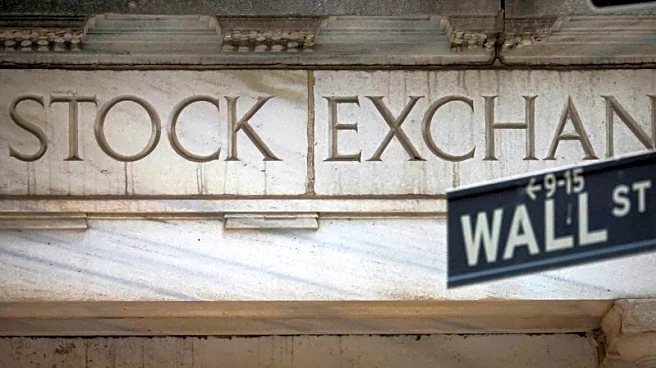What's Happening?
Gold prices have dipped below the $4,000 per ounce mark as the U.S. dollar remains strong, reaching a three-month high against the euro. This development comes amid reduced expectations for another interest rate cut by the Federal Reserve in December.
The Fed recently cut rates for the second time this year, but Chair Jerome Powell indicated that further cuts are not guaranteed. Market participants now estimate a 65% chance of a rate cut in December, down from over 90% prior to Powell's remarks. Additionally, easing trade tensions between the U.S. and China have impacted gold demand. President Trump announced an agreement with Chinese President Xi Jinping to reduce tariffs in exchange for China's crackdown on illicit fentanyl trade and resumption of U.S. soybean purchases. Meanwhile, China has ended a tax exemption policy for some gold retailers, potentially affecting gold demand in the world's largest consumer market.
Why It's Important?
The fluctuation in gold prices and the Federal Reserve's interest rate decisions are significant for investors and the broader economy. Gold typically performs well in low-interest-rate environments and during economic uncertainty, making it a key asset for hedging against market volatility. The Fed's rate cut outlook influences investor sentiment and financial markets, impacting borrowing costs and economic growth. The U.S.-China trade agreement could ease tensions and stabilize global trade, benefiting industries reliant on international commerce. However, changes in China's tax policy may dampen gold demand, affecting global gold markets and related industries.
What's Next?
Investors are closely monitoring upcoming economic data releases, including ADP U.S. employment data and ISM PMIs, which could influence the Federal Reserve's policy decisions. The Fed's December meeting will be pivotal in determining future interest rate actions. Additionally, the impact of the U.S.-China trade agreement on global markets will be scrutinized, particularly in sectors like agriculture and technology. Stakeholders will assess how China's tax policy changes affect gold demand and market dynamics.
Beyond the Headlines
The developments in gold prices and U.S.-China trade relations highlight broader economic and geopolitical shifts. The Federal Reserve's cautious approach to rate cuts reflects ongoing debates about economic stability and growth prospects. The U.S.-China agreement underscores the complex interplay between trade policies and international relations, with potential long-term implications for global supply chains and economic partnerships.














